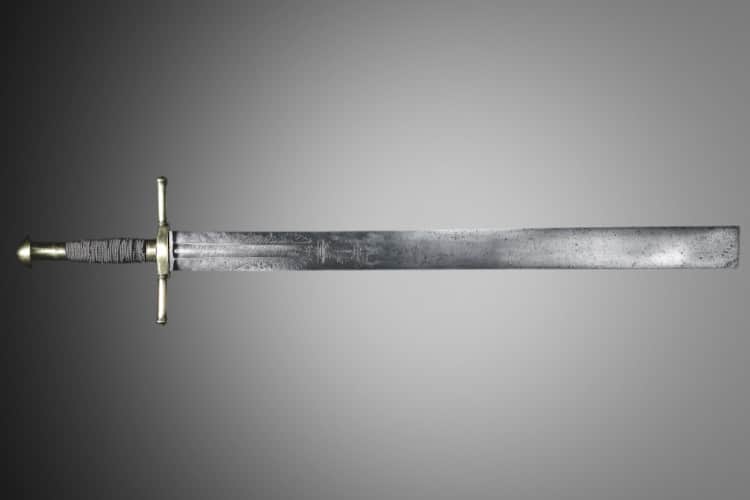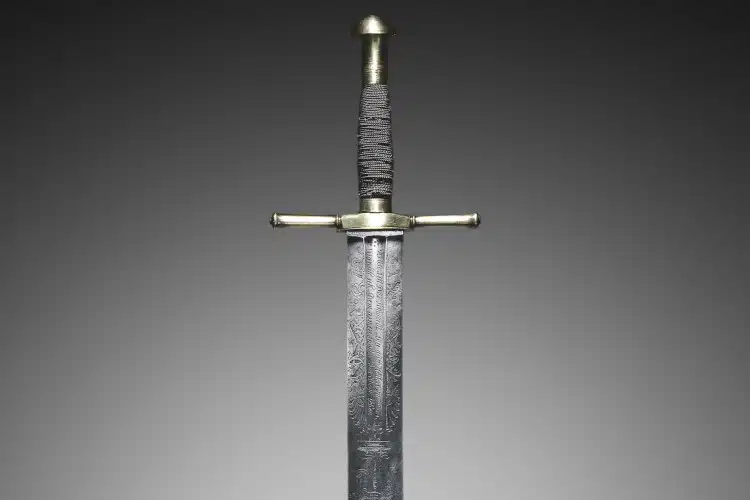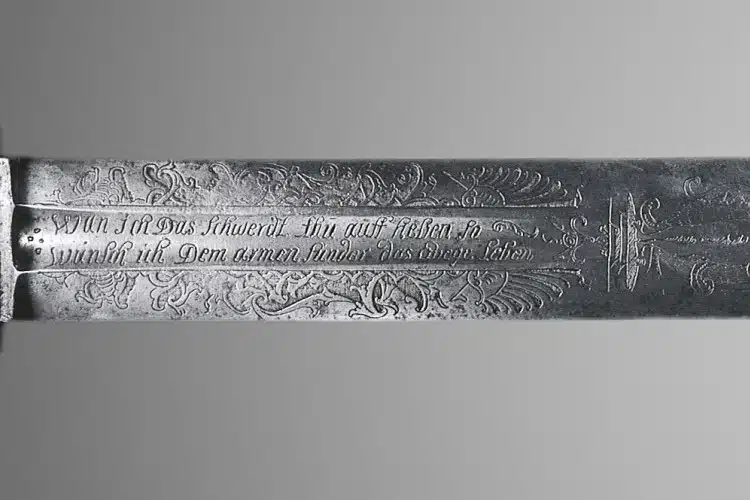However, not all swords were used in combat.
Some had a darker missionsuch as executions.
One such example is a 17th-century executioner’s sword in the Cleveland Museum of Art’s collection.

Photo: Cleveland Museum of Art viaWikimedia Commons(Public domain)
The sword is made of steel, wood, brass, and copper wire.
It was acquired by the museum in 1916 as a gift from Mr. and Mrs. John L. Severance.
It weighs 5.07 lbs, with an overall height of 108.9 cm (42 7/8 in.

Photo: Cleveland Museum of Art viaWikimedia Commons(Public domain)
), of which 85.7 cm (33 3/4 in.)
are from the blade.
The quillions are 22.5 cm (8 7/8 in.

Photo: Cleveland Museum of Art viaWikimedia Commons(Public domain)
), and the grip measures 15 cm (5 7/8 in.)
Although the axe was favored in England, for centuries swords were used throughout Central Europe.
This sword was probably ceremonial for a formal procedure or procession.
Still, the etching on the blade has fascinated the public throughout the centuries.